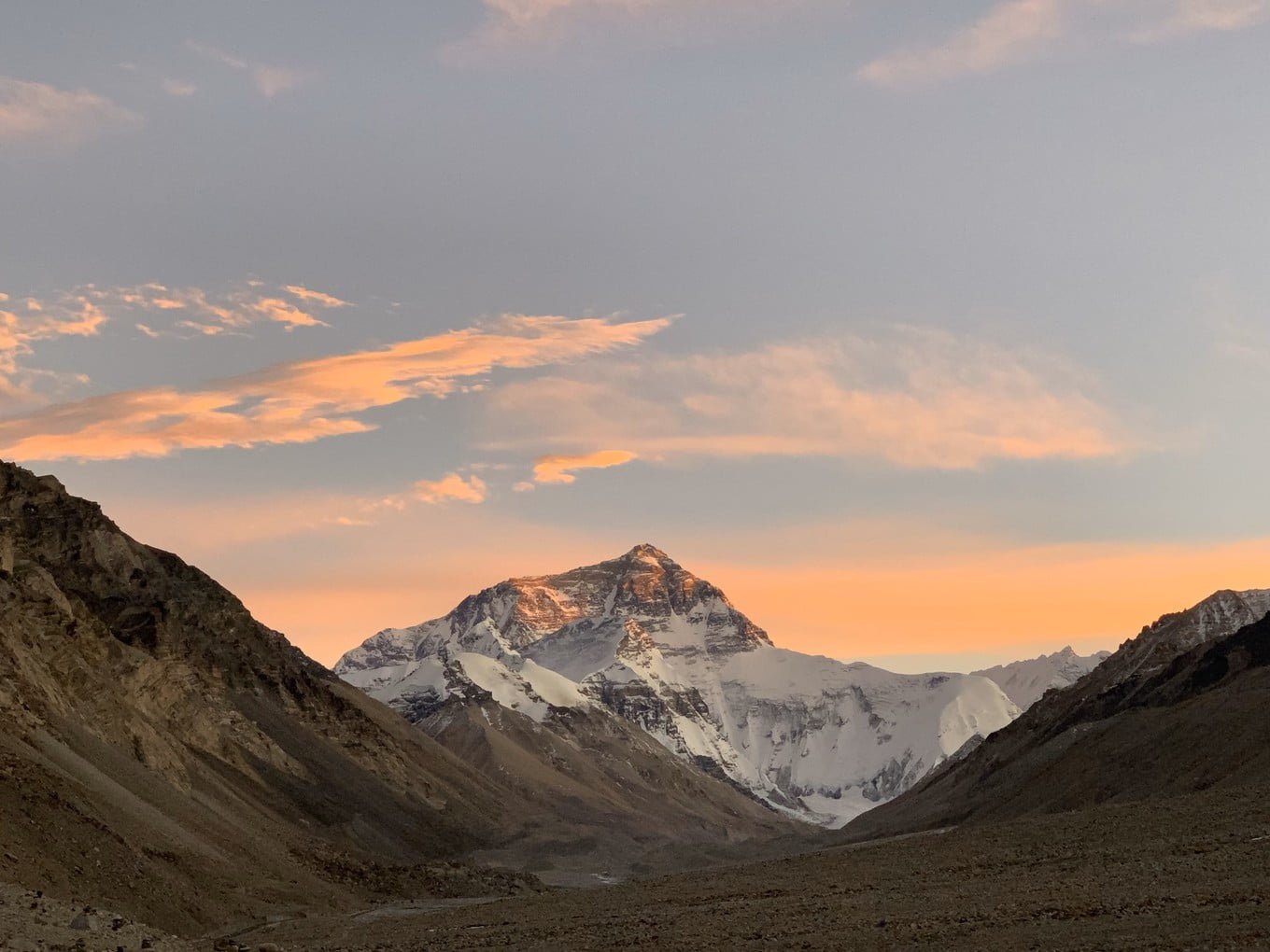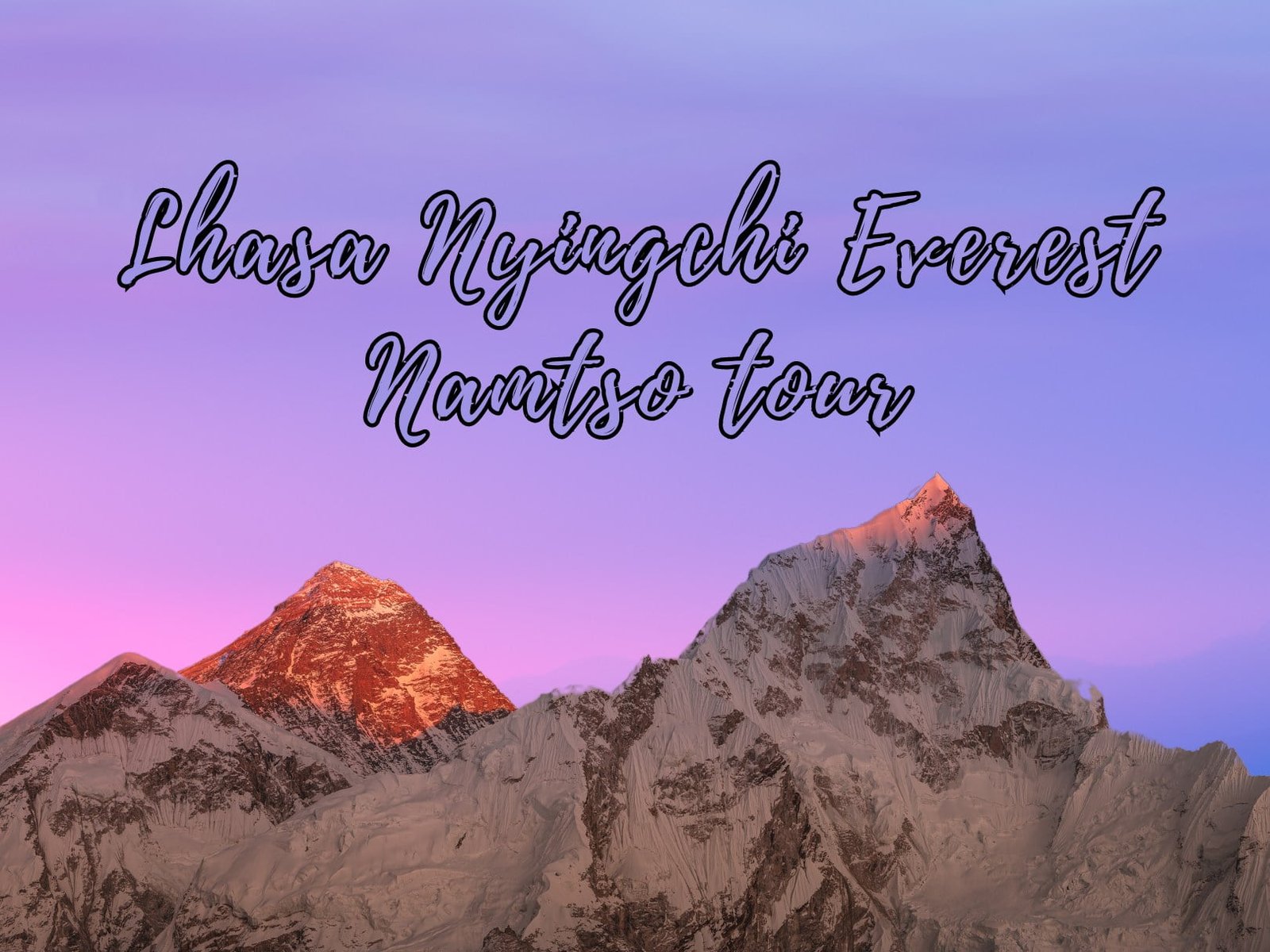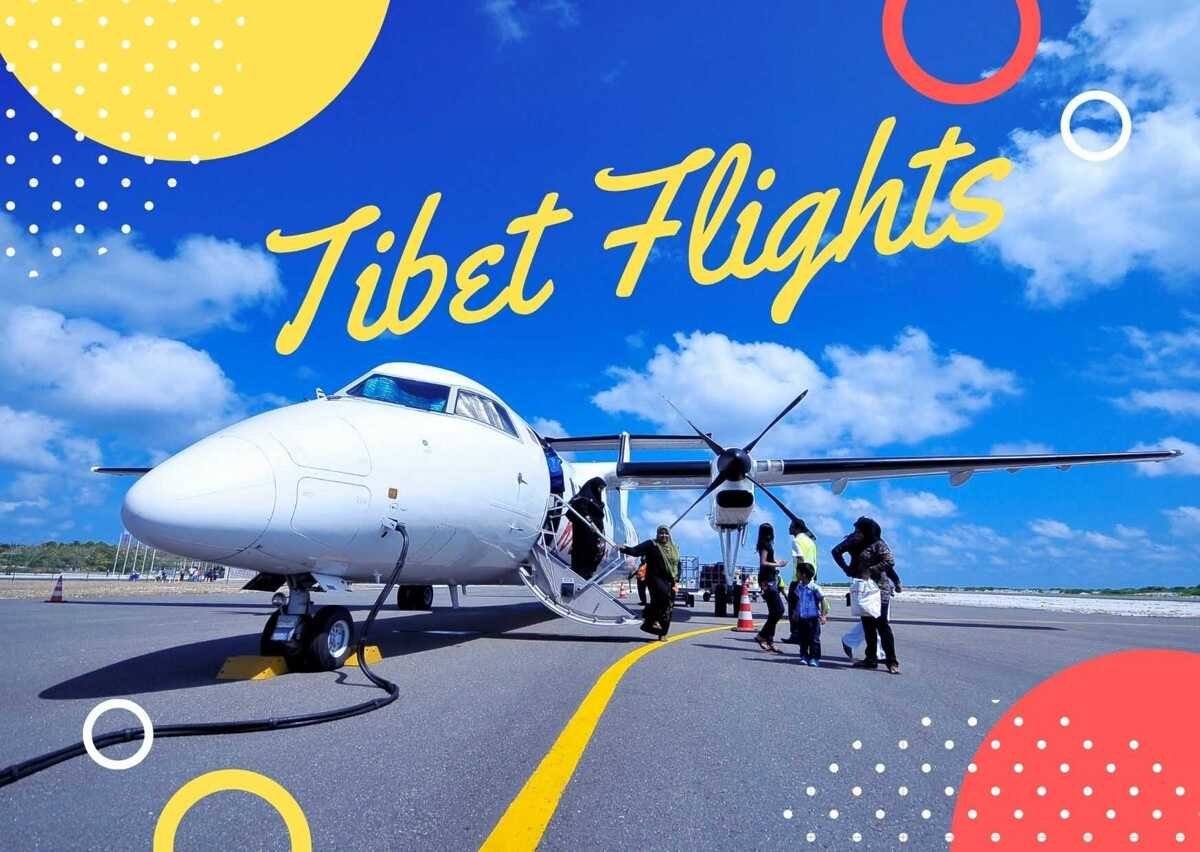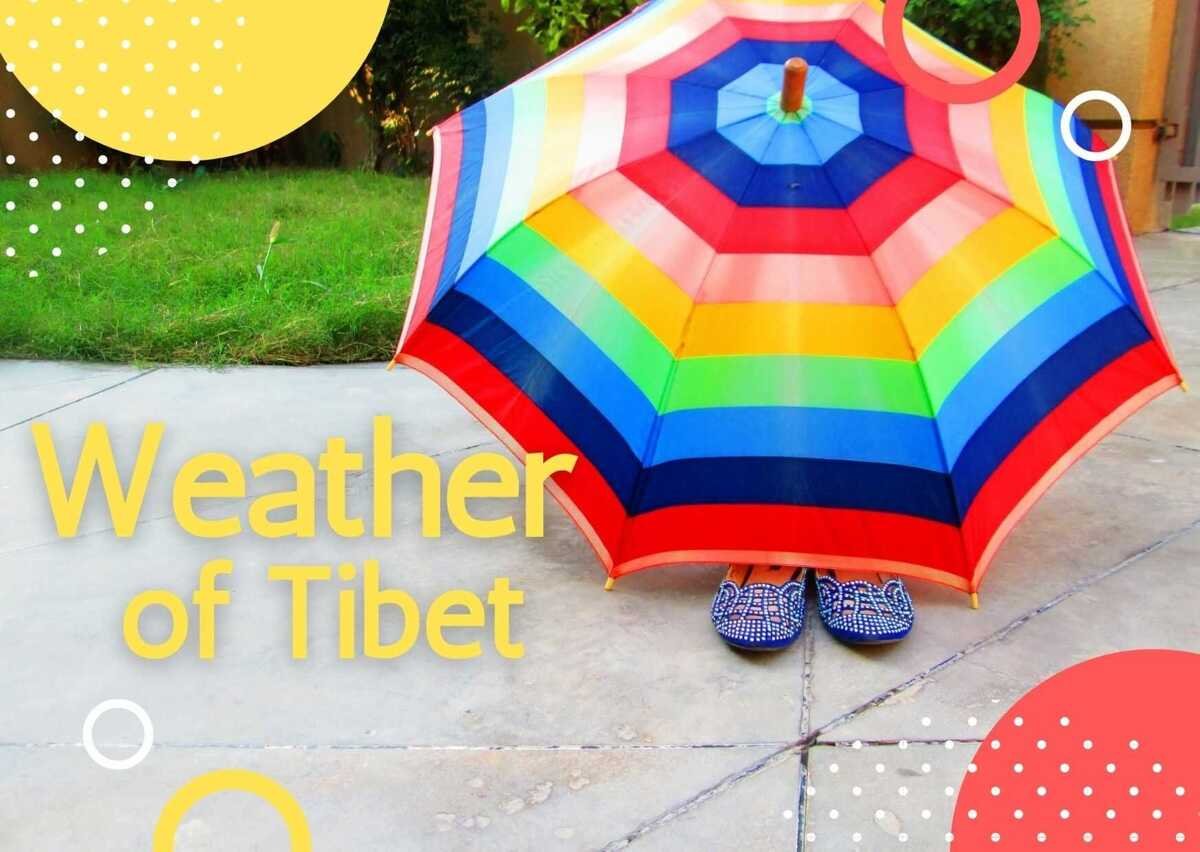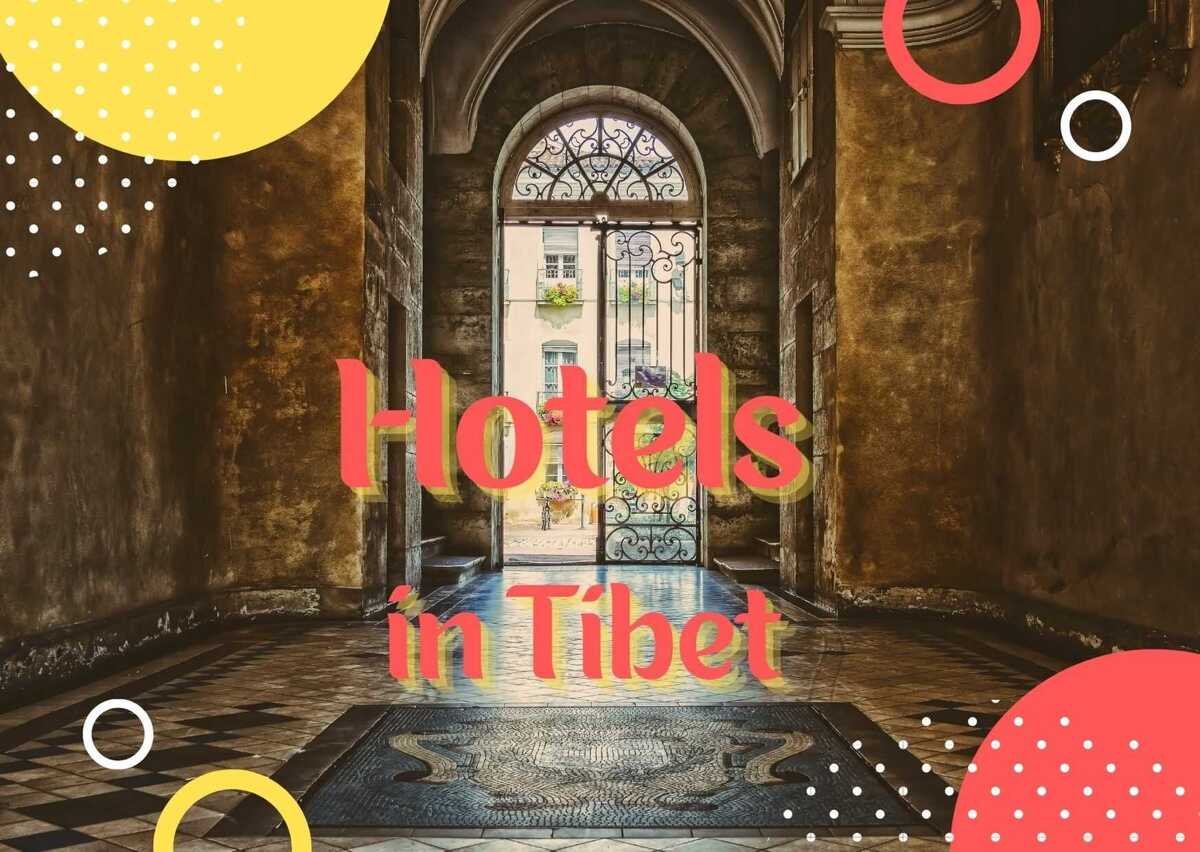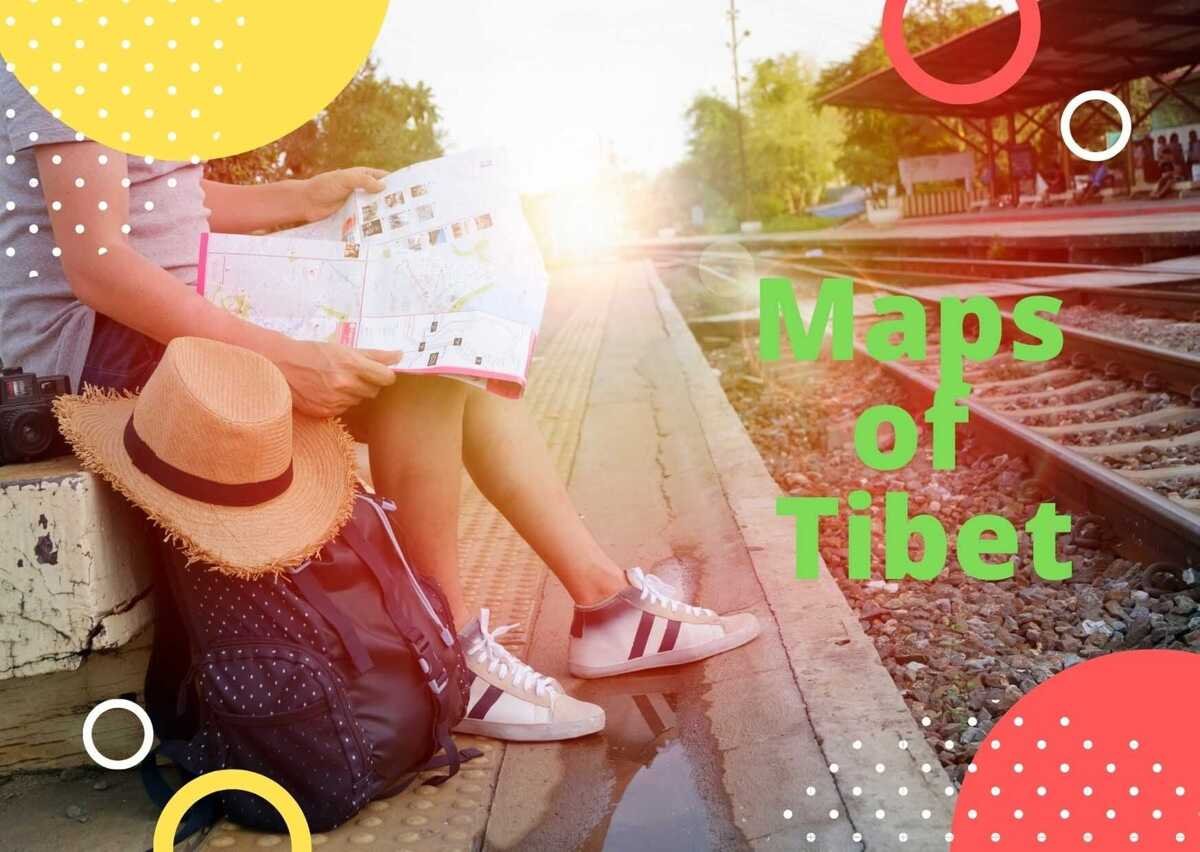Ganden Monastery, located 40km east of Lhasa at an altitude of 4,200m, has a picturesque setting. The surroundings resemble a Dharma wheel and a lotus, adorned with auspicious emblems. There are dedicated pieces by the Dragon King and Yama protector, and Wanggu Mountain where Dharma King Songtsen Gampo performed initiations. The temple is surrounded by lush grass, blooming flowers, and a fragrant forest filled with melodious bird songs.
The Ganden monastery is a serene and beautiful holy land. It is the mandala and Tushita Celestial Palace where the Supreme Master Tsongkhapa achieved Buddhahood. This monastery is the largest and oldest of the Gelug Sect, and one of the three main monasteries in Lhasa, along with Drepung Monastery and Sera Monastery.
At its peak, it housed over 4,000 monks. Tsongkhapa, the founder of the Gelug Sect, established Ganden monastery as the first Gelug monastery in the 15th century during his religious reform in Tibet. Its full name is Drok Riwo Gaden Nampar Gyalwai Ling, and it consists of Yangbachen, Tsomchen Assembly Hall, Jangtse Hermitage, Shartse College, Trithok Khang Hall, Ganden Parkhang, and the Ngachoe chapel.
History of Ganden Monastery
In 1409 AD, in Nedong Desi, Drakpa Gyaltsen with the support of Neupon Namkha Sangpo, Tsongkhapa commenced the inaugural prayer ceremony honouring Sakyamuni Buddha at the Jokhang Temple. Subsequently, a monastery was constructed on Mount Drok Riwoche, known as Ganden Monastery. These actions officially marked the establishment of a new sect of Tibetan Buddhism, namely the Gelug Sect.
From 1409 to 1419, Tsongkhapa served as the abbot at the temple until his death. During this time, he focused on Buddhist writings and diligently pursued his religious reform, establishing the temple as the central training ground for the Gelug sect. Ganden Monastery covers an area of 150,000 square meters and a construction area of 77,500 square meters. It faces east from the west and consists of large and small sutra halls and Buddhist halls. It is a national key cultural relic protection unit. The main structures in the monastery consist of chanting halls and chapels and 43 Khamtsen. Besides, there are 9 debating courtyards in accordance with the debating in the different seasons.
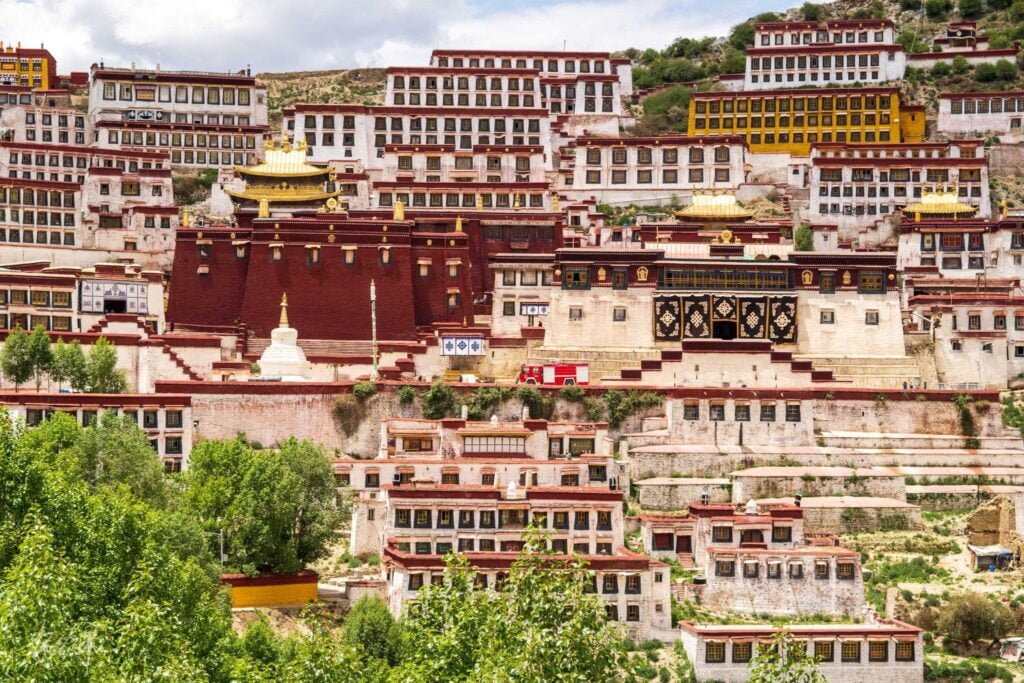
Major Parts of Ganden Monastery
The Ganden monastery was built in the traditional Buddhist architecture style, adjusted measures to the mountain and perfectly blended temples into a palace. The main structures in the monastery are the Main Assembly Hall (Tshomchen) and Tantric College.
Main Assembly Hall (Tshomchen)
Also referred to as “Lachi Hall,” this structure was constructed in 1409. It features 108 large pillars and spans an area of approximately 1960 square meters (with a depth of 44.7 meters and a width of 43.8 meters). It has the capacity to accommodate 3,300 monks simultaneously engaged in chanting. Originally, it was a three-story hall built with the assistance of Taktse Dzongpon Sonam Dorje in 1720. Later, King Labsangkha added a golden roof in 1749, and Jigme Dorje further expanded it, resulting in the scale we observe today.
The hall is primarily dedicated to the future statue of Jampa Buddha, and later for gilded bronze statues like Tsongkhapa. Inside the hall, there is a Dharma seat supported by five golden lions, known as the “Gandan Golden throne,” which represents the Dharma seat established by Tsongkhapa for the Gelug Sect. Additionally, there is a smaller hall located on the left side, featuring a group of intricately detailed and lifelike painted sculptures portraying “Tushitian,” the palace of Maitreya Buddha.
In the small hall, there is the Throne where Master Tsongkhapa meditates and the complete set of “Kangyur” and “Tengyur” Tibetan Tripitaka written in pure gold. The objects in the hall are all legal cultural relics of the Ming Dynasty and hold high value. A large pillar in the main hall is peculiar, being a palm’s thickness from the ground. Visitors to Ganden Temple touch the bottom of the pillar for good luck when worshipping Buddha.
Yangpachen Sutra temple
Situated to the left of Tsokchen Hall, this four-story structure spans 800 square meters and boasts 72 columns. Construction of this impressive edifice commenced in 1409 and concluded in 1416. In 1610, Panchen Lobsang Chokyi Gyaltsen embellished it with a magnificent golden dome. Notably, the hall features a colossal stone, known as “Yangpachen,” which is believed to have been transported from the Yangpachen region in India.
The hall is dedicated to the gold-plated bronze statue of “Thukwang Tsechenma” (the incarnation of Guanyin Bodhisattva), said to be taller than the Jowo Sakyamuni statue in the Jokhang Temple. Its Buddhist Statue is made of gilt copper and adorned with pearls and gems, making it exceptionally beautiful. The Dharma Protector Temple in the sutra courtyard houses a large clay statue of Vajra, with a green and black body, the head of a buffalo, and two bodies of yin and yang embracing each other. It has nine heads, thirty-four arms, and sixteen legs, holding various magical instruments and stepping on a variety of monsters, creating a fearsome presence.
There are 32 statues of the Dharma protector “Damchen Choeje”, Mahakala, “Sangwang Doba”, etc. On the left, there are 62 statues of the auspicious wheel, and on the right, the Yoga deity. Additionally, there are 13 tantric deities and 3 mandalas. These mandalas are made of gilt copper, while the statues of gods and Buddhas are cast in silver, exquisitely moulded, and adorned with splendour. The surrounding murals, high-hanging banners, and magnificent columns and beams are all breathtaking, resembling a dragon palace.
Serdung Lhakhang
Tsongkhapa Tomb Pagoda Hall, located on the highest floor of Yangpachen Sutra Monastery, is known as “Serdung Lhakang” in Tibetan. It is a three-story structure covering 360 square meters. In 1420, his chief disciple Darma Rinchen (1364-1432) and others constructed a spiritual pagoda. They used 900 taels of silver to build a silver pagoda within the hall to house Tsongkhapa’s body.

Since then, successive Dalai Lamas, Panchen Lamas, and Ganden Tripas have restored the pagoda worship hall. The Panchen Lama, Lobsang Choje, adorned the top of the stupa with a gold-plated copper cap, while the fiftieth Ganden Tripa Jatral Gendun Phuntsok covered the stupa in pure gold foil. Lobsang Tenzin, the grandson of Gushi Khan, used the one-year taxation of the Qinghai region to transform it into gold and adorned the tower body with precious jewels. This turned it into an incredibly opulent golden tower.
Additionally, on the left and right sides of Tsongkhapa’s golden Pagoda, is the silver pagoda of Kedrup Gelek Pelsang and other ancestors. Following Tsongkhapa’s tradition, each Ganden Tripa has a tomb stupa built in this hall after their demise. Currently, there are 95 stupas, all of which are splendid and grand. Later, the thirteenth Dalai Lama Thupten Gyatso built the gatehouse of the Golden Pagoda Hall and repaired the Golden Pagoda, making the Golden Pagoda Hall more beautiful and solemn.
There are also statues of red and yellow Manjushri, and Deity with rounded arms and faces, and 23 silk-woven thangka scroll paintings called “Gandan Embroidered Tangkha”. There is also the Tooth Pagoda of Supreme Master Tsongkhapa, in which the teeth of Master Tsongkhapa with Manjushri Bodhisattva statues are enshrined in the one-cubit high stupa.
Trithok Lhakhang
Lama Tsongkhapa’s Living Hall, known as “Tritokang”, was the residence and secret practice site of Master Tsongkhapa and successive Ganden Tripa. It was constructed in 1409 by Sonam Dorje and expanded in 1720, with the addition of a golden roof during the reign of the seventh Dalai Lama. The hall primarily houses gilded bronze statues of Manjusri Bodhisattva, Tara, and Avalokiteshvara
There is a deity mandala, known as Yidam Kyikor, for the Yellow Sect to practice Tantric Dharma, namely Pel Sawang Duepa, Dunqu (Demchok). There are 4 mandalas, including the Vajra, the Jikje (Yamantaka), and the Chyakna Dorje (the Vajrapani Bodhisattva), as well as the cassocks and cushions used by Tsongkhapa during his lifetime, seal, etc. This hall, which preserves the clothes used by Tsongkhapa and his successive Ganden Tripas, is also called the “Clothes Hall” temple.
In this hall, there are three bedrooms of the Supreme Master, the Dalai Lama of the past generations, and the Ganden Tripas of the past generations. In the Dharma Protector Temple, there are dharma protector masks made by Kedrup Je himself with the dung of cows that provide ghee for the supreme master, and Thangka portraits of Dharma protector gods painted by Kedrup Je with his own nosebleeds, etc.
Lima Shrine:
Consecrating the statue of Sakyamuni descending to Tsongkhapa, dedicated by King Drakpa Gyaltsan, along with over 100 statues of various deities of Tsongkhapa practising Tantric Buddhism. These statues primarily include the Vajra Mandala of Great Power, Virtue, and Fear.
Shakya Nengren Hall :
It is dedicated to over 10 statues of Shakyamuni Buddha, Jampa Buddha, Manjusri Bodhisattva, and Tsongkhapa.
Gallery of Ganden Monastery



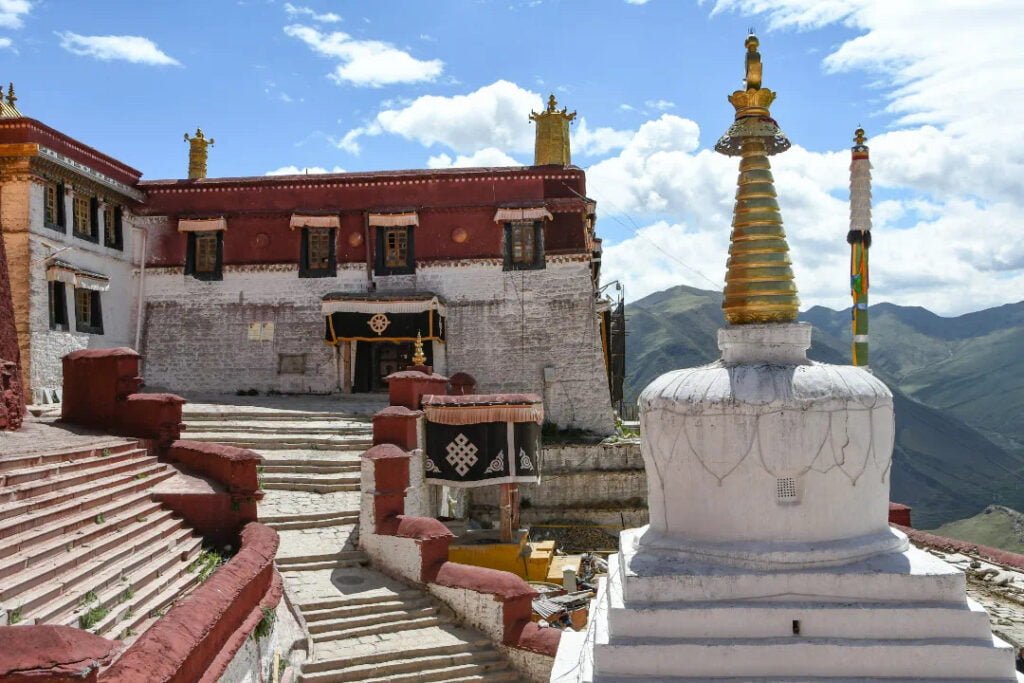
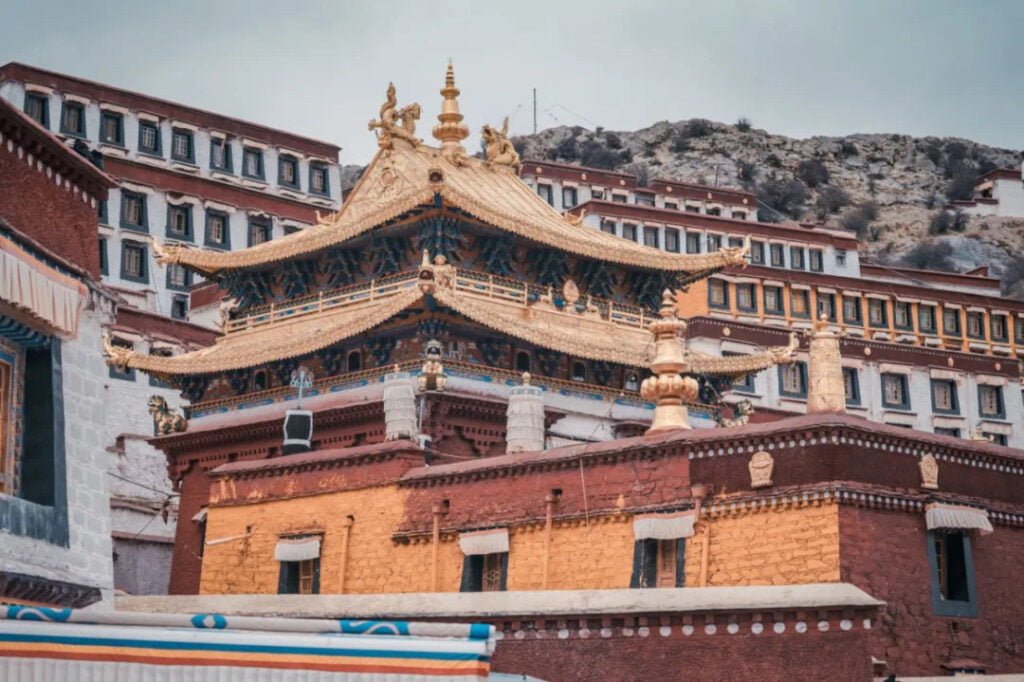
Ngamcho Lhakang
The temple houses Tsongkhapa’s teeth and relics, a naturally formed stone-patterned Manjusri Bodhisattva statue, Tsongkhapa’s main deity, a Thangka of the Dukhar with a large white umbrella cover, and a clay statue of Tsongkhapa personally shaped by Kedrup je. Additionally, the temple also contains ivory Buddha statues carved by Sakyamuni himself, Nagarjuna Bodhisattva statues made of Ganges river mud, and Tsongkhapa statues hidden in his hair, which are greatly admired by worshipping tourists.
Dratsang and colleges of Ganden monastery
Ganden monastery has two Tantric colleges, constructed by Tsong Khapa’s disciples. The chanting halls in each college can accommodate 1,500 lamas. In addition, there are over 20 smaller chanting halls affiliated with different Khangtsens. Each of these halls can accommodate 200 chanting monks. Furthermore, there are several palaces built by Desi.
Jangtsey College
Jangtsey Dratsang is the sleeping hall of the second Ganden Triba Kedrup Je, built by Horton Namga Palwa, a disciple of Tsongkhapa. It has 84 columns, covering an area of 930 square meters, and can accommodate 1500 monks. In the Dratsang, there are statues of Sakyamuni preaching, auspicious goddess guardians, Vajra mandala, and the main deity, the Vajra statue of Great Power, Virtue, and Fear.
Shartsey College
Shartsey Dratsang was built by Sherpa Rinchen Gyaltsen, a direct disciple of Tsongkhapa. There are 88 columns in the scripture hall, with an area of about 1000 square meters, which can accommodate 1500 monks.
Jangtse and Shartsey Dratsang study Tsongkhapa’s “three masters and apprentices” scriptures. Dratsang Khenpo, known as “Choje,” supervises the monastery’s administration and teaching. Jangtse Choje was appointed by the Khenpo of the Lower Tantric Academy, taking over from Triba as the Gelug sect’s master. Historical records indicate that Tsongkhapa, the Gelug Sect’s founder, has given teachings 97 times.
Treasure and murals of Ganden monastery
The murals and sculptures of Ganden Monastery are exquisite, and its cultural relics are rich. They include the treasure armour bestowed by Emperor Qianlong of the Qing Dynasty, Tsongkhapa’s seat, the Zen bed from his passing, and 24 silk weaving pieces from the Tang Dynasty. Gushri Khan’s cards and cushions demonstrate the temple’s long history and religious significance.
Ganden Embroidery Thangkha is a significant event for showcasing thangkas at Ganden Monastery. “Embroidered Tangka” refers to Thangka that is embroidered using Kesi thread. In the early 15th century, Emperor Yongle of the Ming Dynasty, Zhu Di, gifted Tsongkhapa 24 beautiful thangkas depicting eighteen arhats, Tara, flowers, and trees. Tsongkhapa greatly valued and worshipped these thangkas.
Every year on June 15th, the Tibetan calendar marks the commencement of the “Gandan Embroidery Thangkha” festival. Initially, the exhibits were displayed for a duration of seven days in Laji Hall, Trithokang Hall, and Tomb Stupa Hall. During this time, the monks convene daily to recite scriptures and engage in offerings and prayers. Subsequently, a permanent exhibition is set up and showcased annually. Throughout the exhibition, both monks and laypeople from Sichuan, Qinghai, Gansu, and Tibet assemble, resulting in a truly magnificent spectacle.
Ganden Ngamchoe, Lantern Festival
Ganden Ngamchoe, also known as the Lantern Festival, is celebrated on the 25th day of the tenth month according to the Tibetan calendar. This day commemorates the para nirvana of Tsongkhapa, the Gelug sect’s founder. The festival features a large Buddha statue measuring 26 meters in length and 10 meters in width, which is displayed in the temple during the day. At night, butter lamps are lit on the temple’s roof, while Buddhist lanterns are placed indoors between the windows and walls, illuminating the space and creating a starry effect. The lama conducts solemn rituals, including making offerings, lighting lamps, chanting sutras, and performing kowtows.
Ganden Druchu
Ganden Druchu, also known as “Taktse Druchu”, refers to the practice of Tantric religious law in the Taktse area. It takes place annually from February 3rd to the 15th according to the Tibetan calendar. In 1417, the Yangpachen Sutra Academy, dedicated to the study of Tantric Buddhism, was established and adorned. During this time, a Tantric Buddha statue was also installed and consecrated.
After attending the prayer ceremony in Lhasa, Tsongkhapa returned to Ganden Monastery the following year to teach Tantra to his disciples. He conducted initiation ceremonies for disciples, including Guhyasamadhi Vajra, Great Bliss Vajra, and Yamantaka Vajra. On the 14th day of the second lunar month, the Tibetan calendar observes 7 Gomo offerings to pray for favourable weather and abundant harvests. This marked the beginning of the main tantric teachings and the compulsory tantric deity foundation in Ganden Monastery, specifically for the Gelug Sect, known as “Ganden Drubchu” at that time.
Ganden Monastery cliff statues
Ganden cliff statues are found in the forest outline of the temple. There are 33 statues, divided into two types: bas-relief and line carving. The statues vary in size, with some life-size. The practice room on the right side of the temple rises from the cliff and contains 6 statues. In the middle is Tsongkhapa, standing at 1.72 meters tall. On the left is Dromtonpa, measuring 43 centimetres in height. On the right is Atisha, standing at 50 centimetres. On the lower right is the Palden Lhamo, measuring 95 centimetres. On the upper left is Sakyamuni Buddha, measuring 44 centimetres, and on the lower left is Buddha Amitayus, measuring 68 centimetres.
Tsongkhapa wears a yellow hat and cassock, performs the Dharma Wheel Seal with his hands, and sits in the lotus position. Palden Lhamo is in an angry look, riding a yellow mule naked, wearing a skull crown, a human head chain, bracelets, armbands, and anklet. She holds a yellow umbrella in her right hand and a skull bowl with spilt blood in her left hand, creating a dynamic appearance. The fourth group of Tsongkhapa statues in the middle is small and unique, measuring only 26 centimetres in height. It feels as smooth as jade when touched by pilgrims, making it an exceptionally precious masterpiece carved by Kedrupje using nails.
Lama Tsongkhapa : Founder of Ganden Monastery
Tsongkhapa (1357-1419), the founder of the Gelug sect, was named “Lobsang Drakpa”, meaning “good wisdom”. He was a Buddhist philosopher, thinker, and reformer. Born in the Tsongka region of Qinghai, he received ordination at the age of 3 from Rolpai Dorje, the fourth living Buddha of the Karmapa. He travelled to Tibet at 16 and studied Sutras and Esoteric Sutras from renowned teachers of Kadam, Sakya, Kagyu, Xialu, and other sects, making significant progress.
At 29, he received bhikkhu ordination from Tsultrim Rinchen at Nanje Lakhang Monastery. By the age of 34, he had mastered 17 classics and gained a high reputation. From the age of 38 onwards, he practised enlightenment through all sutra and tantra teachings, accumulating true merits.
The Tibetan Buddhist sects during that time were lax and reckless in their adherence to precepts. To address this issue, Tsongkhapa initiated a religious reform movement centred around strict observance of precepts. In 1395, he proposed the construction of Jingqi Temple and in 1401, detailed rules for precepts were formulated and the Jingqi Temple Dharma Conference was held.
In 1409, the Lhasa Praying Dharma Conference, also known as Monlom in Tibetan, took place. This marked the establishment of Ganden Monastery and a period in Tibetan Buddhist history that emphasized precepts, restraints, and the proper order of practice. It also led to the emergence of a new sect called Gelugpa.
After establishing a new sect until his death in 1419, Tsongkhapa primarily engaged in lecturing and writing books. He authored over 160 works across 19 volumes during his lifetime, including “Jamchub Lamrim Chenmo” and “Ngarim Chenmo” which have been passed down through generations. Within this period, he dispatched his disciple Sakyamuni to Beijing to meet Emperor Ming and establish connections with the Ming royal family.
Additionally, he directed his disciples to establish Drepung Monastery and Sera Monastery. His religious activities and Buddhist ideas hold a significant position and influence in the history of Tibetan Buddhism, earning him the title of a distinguished master and the renowned “second son of Buddha” and “manifestation of Manjushri” in the world.

